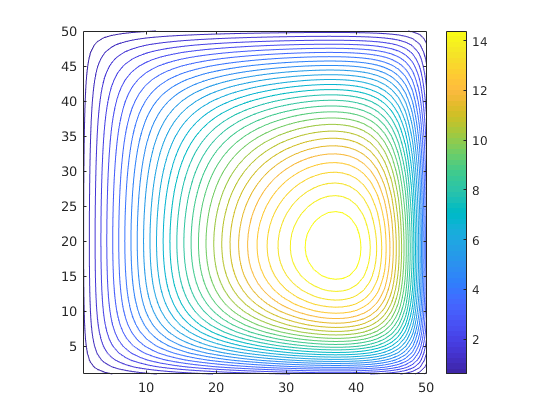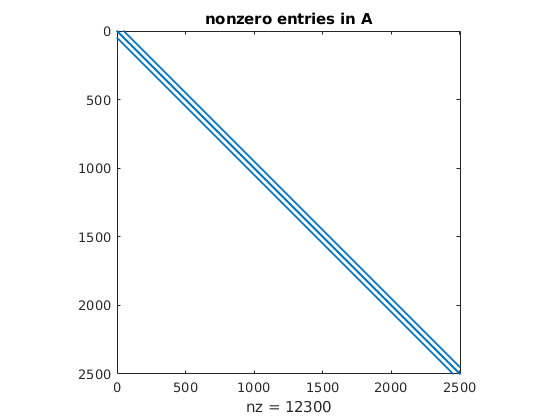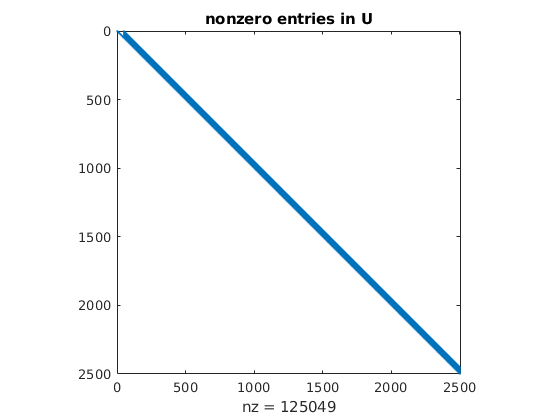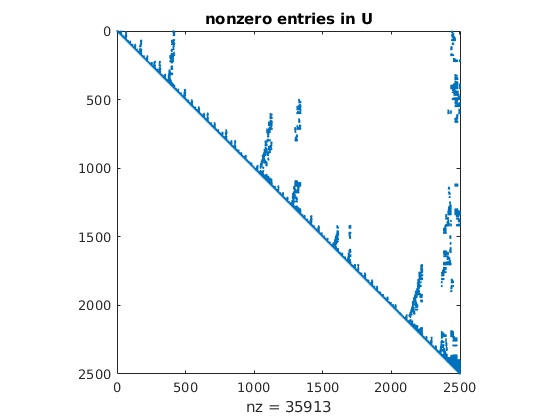Example for sparse matrix A: problem on n by n grid
Contents
You need to download an m-file
Download the following m-file and put it in the same directory with your other m-files:
Solve problem on n by n grid
We have 2500 unknowns  arranged on a 50 by 50 grid:
arranged on a 50 by 50 grid:
- bottom row, left to right:

- 2nd row from bottom, left to right:

- ...
- top row, left to right:

For each unknown  we have neighbors
we have neighbors  to the West, East, South, North and an equation
to the West, East, South, North and an equation

(if some neighbor doesn't exist the corresponding term is omitted)
For our example we choose aD=40, aW=-10.8, aE=-9.2, aS=-9.6, aN=-10.4, and the right side vector b where all entries are 1.
n = 50; % unknowns are on n by n grid M = n^2; % number of unknowns A = spgridmat(n,40,-10.8,-9.2,-9.6,-10.4); % M by M matrix in sparse format b = ones(M,1); % right hand side vector u = A\b; % solve linear system % (uses clever row and column permutations to minimize "fill-in") contour(reshape(u,n,n)',30); axis equal; colorbar % plot solution as contour graph

Fill-In for standard pivoting strategy
Note the "fill-in" in the matrix U. The matrix A has only 12300 nonzero entries, but U has 125049 nonzero entries.
spy(A); title('nonzero entries in A'); snapnow [L,U,p] = lu(A,'vector'); % column pivoting, choosing candidate with largest absolute value spy(U); title('nonzero entries in U'); snapnow


Fill-In for optimized strategy with row and column pivoting
Now the nonzeros in U have a weird shape. But the number of nonzero entries is only 35913, compared to 125049 for the standard pivoting strategy.
[L,U,p,q] = lu(A,'vector'); % Note: this only works for A in sparse format spy(U); title('nonzero entries in U'); snapnow
